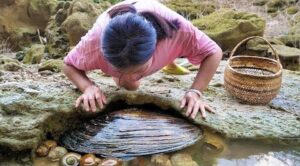The Fascinating World of Pearls: Nature’s Timeless Treasure

Click here to watch more and then you can buy on web : https://amzn.to/4fwmOSw
Pearls have long captivated the human imagination, cherished for their beauty, rarity, and symbolism. Formed inside mollusks like oysters and mussels, these organic gemstones are created through a natural process of irritation, where the mollusk secretes layers of nacre (mother-of-pearl) around an irritant, such as a grain of sand. Over time, these layers accumulate, transforming into the lustrous pearls we admire today.

Historically, pearls were considered the epitome of wealth and elegance. In ancient cultures, they were believed to have magical or healing properties, often worn as symbols of purity, status, and divine favor. They graced the necks of royalty and the robes of the gods, as seen in ancient Greece, Rome, and India.


In the modern world, pearls continue to be a symbol of sophistication, appearing in everything from high fashion to wedding jewelry. However, the pearl industry has evolved significantly. While natural pearls remain rare and costly, the rise of cultured pearls has made these treasures more accessible, while still maintaining their allure.
There are various types of pearls, each with its unique characteristics, including Akoya pearls, Tahitian pearls, South Sea pearls, and freshwater pearls. These pearls vary in color, size, shape, and luster, with the most prized being perfectly round, with a high shine, and a smooth surface.
In addition to their aesthetic value, pearls have a rich cultural significance. In some traditions, they are believed to bring luck, protection, and emotional healing. In others, they represent the union of opposites — the hardness of the pearl symbolizing strength and the softness of the nacre representing purity and femininity.


The process of farming pearls, especially in regions like Japan, French Polynesia, and Australia, has become an intricate art, blending nature with human ingenuity. Advances in pearl cultivation techniques have allowed for greater sustainability and improved quality control, ensuring that these organic gems continue to dazzle for generations to come.
From their humble beginnings inside oceanic creatures to their status as a coveted gemstone, pearls remain one of nature’s most enduring treasures—both a timeless symbol of beauty and a marvel of the natural world.



